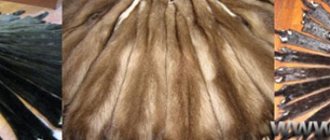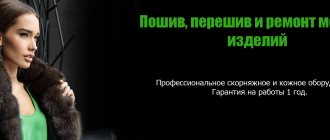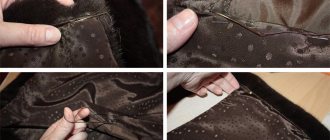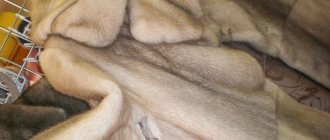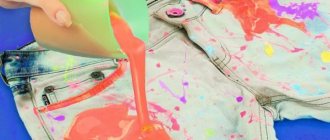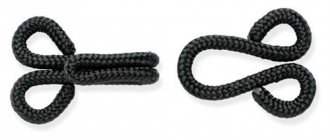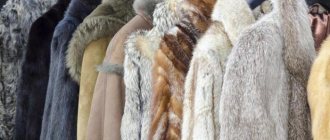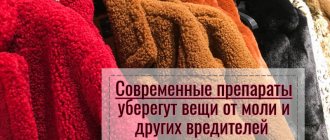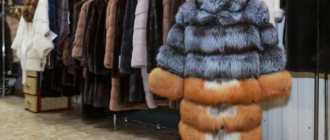There are usually only two options when you may need to repair a mink fur coat. The first is that the fur coat is damaged, and you need to repair this damage. The second option is that you are tired of your model (it has gone out of fashion, lost its relevance, or simply stopped liking it), and you want to remake it into something else. In both cases, some types of repairs can be done with your own hands at home. But is this always possible, and is it necessary? Let’s figure it out.
How to repair a fur coat?
Atelier or fur restoration at home: what to choose
Services for restoration and alteration of fur products are often offered to be performed directly at the master’s home.
Can they be trusted? Of course, if there are recommendations from friends or acquaintances. But you should always remember that you are giving an expensive item into the hands of a stranger. Of course, not all furriers working at home are scammers, but some of them are self-taught, who can easily ruin a fur coat with their inept actions. Below is an example of an unsuccessful restoration of a fur coat (pictured), which was entrusted to such would-be masters.
The studio may also not be very successful in refreshing your fur coat. But the customer will have a receipt, an advance payment check, and sometimes the receipt indicates exactly what will be done with the item. All this evidence can be taken to court if the product was damaged.
Learning to furrier
The next problem that indicates the need to restore a mink coat is loose seams. Most often this occurs in the chest area, on the back or in the armholes of the sleeves. First we deal with the lining: if it is stitched, it must be carefully torn off so that we have access to the area that requires repair. Do not use a sewing machine for restoration; it is advisable to sew up the tear using a furrier’s stitch (photo) by hand; to do this, practice on an inconspicuous area. The main thing is that when sewing, make sure that the fur does not get into the seam, and also adjust the thread tension so that the seam does not turn out to be too tight. At the end of this complex operation, sew up the lining, and you can be proud of yourself - after all, you did everything with your own hands!
Worn fur emphasizes the old age of your fur coat. You will have to put a patch in place of the abrasion. For these purposes, you can use a piece cut from a collar, pocket, belt or hood. You can also choose a new skin of a suitable color and pile. Using a sharp blade, carefully cut off, trying not to affect the pile, the patch of the desired size. At the end of this jewelry operation, it is necessary to tap the junction of the main product and the patch with a wooden hammer through paper, which will align the old and new fur and level the restoration site (photo).
A very unpleasant and difficult problem to overcome at home is the splitting of a fur coat, when fur fibers on the collar, sleeves, and hood spread out to the very core. This is, one might say, a natural defect that can occur even with a new mink model. You can deal with this problem at home if you have a household steam generator, but it’s better to take the fur coat to a repair shop.
Let's become fashion designers
When purchasing an expensive mink model, you expect that you will wear it for a long time, but capricious and changeable fashion interferes with your regular life, or you are simply tired of your old, but still quite like new, model, and you decide to make drastic changes, for example, shorten it. First you need to decide on the length, to do this, put on a fur coat, button it up and tie the belt, carefully straighten it and pin the hem with tailor's pins.
Measure the required length along the entire hem of the fur coat, do not forget to leave 4 cm for the seam allowance, then, using a sharp blade, carefully cutting with forward movements, cut off the excess. Tuck the fur and sew it over the edge with a seam, aligning the right and left edges
All that remains is to sew on the lining and straighten the fur that got into the seam (pictured before and after).
And in the end, some tips on how to care for a mink coat so that you don’t have to restore it for as long as possible.
- To ensure longevity, try not to wear fur in wet weather. If it does get wet, dry it away from heating devices, preferably in a natural draft. In summer, regularly ventilate the product in the shade.
- Protect fur from moths, as natural fur infected with moth larvae cannot be restored. Currently, there are many ways to protect yourself from harmful insects: from banal orange peel and geranium to industrial sprays and solutions. Well, it’s better to leave grandma’s proven old method - mothballs - in the past, since you will get rid of moths, but you will no longer be able to remove the fetid odor from your favorite fur coat.
- Store your fur coat in a special case in a spacious closet so that the fur does not come into contact with the walls of the closet or other clothes and does not get wrinkled.
https://youtube.com/watch?v=xT5NaN1GqQQ
Using these simple tips will preserve the appearance for a long time and will save you from having to restore your fur coat yourself or turn to professionals for help.
How to fix loose seams under the armpit (photos and videos)?
At home, such sewing repairs are carried out manually - using an overcast stitch or a goat stitch.
For easier and better work, the unraveling seam must be glued with a special contact tape (without heat treatment) and stitched with an overcast stitch.
You can fix small frays on the folds by tucking them into the inseam. To do this, you must follow this algorithm:
- Open the bottom lining and the seams that secure the hem.
- Carefully sweep away the bald spot.
- Duplicate using cold contact tape.
- Cut out the damaged area with a blade or knife.
- Next, you need to sew the edge together with the contact tape, using an overlock stitch.
- Turn the fur item inside out and tap the seam through fabric or paper.
- Sew the lining in its original place.
As a rule, bald spots on a fur coat appear after prolonged intensive use.
Frayed fur is a significant defect in the product, which will require replacement of damaged areas.
How to remove scuff marks? If you do not have sewing skills and confidence in the success of the restoration, in order not to completely ruin your favorite item, it is better to entrust the repair to professionals.
Pieces of fur;
Threads No. 40, selected by color;
Set of needles;
Thimble;
Furrier's knife or blade.
In this case, it is necessary to install a patch. The abrasions on the underside of the fur coat are carefully cut out with a blade. In their place, new pieces of fur are carefully sewn, perfectly matching the size, texture and color of the main product.
A fur coat made of natural fur is an expensive pleasure. It also costs a lot to repair. If the product has minor defects, it can be repaired at home.
How to sew up a hole under the arm?
Glue “Moment” - threads to match the color of the fur - bandage - several needles of different sizes
1. The simplest option is when the fur coat tears at the seam. Sew the seam twice, securing the threads of the previous seam. This will prevent it from blooming again.
2. If the skin is torn, the fur should not be sewn together, but sealed. You need to seal it very carefully so that the defect is not noticeable to others. Dry the fur coat for 2-3 days and lay it out on a flat surface. Place the torn edges of the fur as close as possible to each other. The slightest distortion will be noticeable.
Carefully hem the pieces with a needle. Cut a small piece of bandage, soak it in glue, and apply it to the seam. Leave the fur coat for a while to later evaluate the result of the work done. Do not change the position of the product, do not fiddle with it, do not hang it on a hanger. You must wait until the glue has completely dried. This will take 1-2 days.
If your fur coat breaks within the warranty period, it is better to take it to the store. Unfortunately, this indicates its poor quality. You can request an exchange of goods or a refund. You should not sew up the hole yourself even if you are the owner of a light fur coat. Even a slight discrepancy between skin particles or a bevel on such a product will be visible. It’s better to take it to the studio right away.
Treat your natural fur coat with the utmost care. Avoid accumulation of dust and dirt, loose fur and tears. Very often, defects are caused not by manufacturing defects, but by one’s own carelessness. Do not forget about the correct storage conditions. For the summer, purchase a special cover for your beauty and take care of protection from moths.
Defects on fur products
When is fur coat restoration necessary? The following signs indicate this:
- the edges of the sleeves are frayed;
- the fur has rubbed off on the pockets and at the bottom of the product;
- the fur coat is torn (along the seam or along the skin);
- the lining is worn out;
- bald patches appeared in any area;
- The fittings are damaged: buttons, hooks, loops are torn off, along with small areas of fur.
In addition, restoration of a fur coat may include changing the color, style, length, adjusting to the figure or a complete alteration.
Often such work involves the use of additional materials: similar fur for inserts, or completely different fur for a new collar, sleeves, or trim. All this affects the cost of rework. The final price for repairing a fur product can only be found out when the technician examines the item and determines the degree of wear, and also listens to the client’s wishes.
Sealing a fur coat
Even a hole in a fur product can be repaired.
In order to restore your favorite fur coat, you need to stock up on the following materials:
- Threads of a suitable color.
- Set of needles.
- Bandage.
- Glue for fur coats.
Progress
If your fur coat was torn at the seam, then this option will be the most painless and not scary. It is enough just to carefully, but at the same time, securely sew up the damaged area where the fur coat is torn.
If the skin itself tears, then you will have to seal it. The choice remains with the owner of the fur coat - he can either seal it with his own hands, or take the fur product to the studio to have it done by a specialist.
Do-it-yourself repair of a fur product proceeds as follows:
- The first step is to apply the torn edges of the fur to each other as accurately as possible.
- Next, you need to carefully sew the pieces of torn skin to each other. Try to do this as carefully as possible, using a thin needle so that the damaged skins do not continue to tear.
- After this, it is worth preparing the glue for further work. “Moment” glue is suitable for this procedure like no other, however, you can use any other adhesive composition you like.
- Cut a piece of bandage - it should be slightly larger than the seam where the two skins are joined. Next, you need to soak a cut piece of bandage with glue and apply it to the seam.
- Leave the fur item to dry.
How to repair your fur coat at home
If you accidentally tear or damage your fur coat, it can be repaired free of charge, but only if the warranty period specified in the coupon has not yet expired. If it is already out, then you will have to pay for its restoration out of your own pocket.
You shouldn’t take on repairing a fur coat if you don’t have the skills to work with fur and don’t understand anything about tailoring, otherwise you may damage the product and it will be problematic to restore it.
In addition, to work with fur, you may need a special tool that the studio has, but which you do not have. This is a sewing machine, a special knife and scissors.
Sew a button to a fur coat
To sew a button to a fur coat, take thin paper and place it under the button. This is necessary so that the pile is not sewn together with the threads. After the button is sewn, the paper can be torn off.
Do not sew the button close to the skin. Leave at least 2-3 mm. To sew a button to a fur coat you will need thread No. 60-80.
Sewing the fur coat at the seams
As a rule, people bring a fur coat for repair if it is torn at the seams. This kind of trouble can happen if the fur coat is small. You can fix this problem yourself.
If the seam has opened slightly, it can be joined with a buttonhole stitch on the wrong side of the product under the lining. You need to sew up the seam by straightening the fur outward. For this you will need cotton threads size No. 60-80.
If it is not possible to sew the seam from the inside out, then you will have to sew it from the front side.
If the skin on a fur coat is torn, there is no need to sew it up. In this case, the skins are glued together. To prevent the joints from being noticeable, place a piece of gauze on the reverse side and coat it with glue so that not only the gauze is saturated, but also the flesh. This method of gluing torn fur coat skin will allow you to connect the torn parts so that no one will notice them.
In what cases should you contact specialists?
If you have no experience with restoring fur items, it is recommended to contact a workshop. This will save you time and money. At the same time, acting independently, there is a risk of completely damaging the product. It is also worth considering that workshops have special machines designed for working with fur. They allow you to get a perfect seam without damaging the product.
See also
How to properly care for plastic windows with your own hands, a review of the best products
What you need to repair or restore a fur coat
If the item is subject to restoration, you need to think about the material for repair. A long fur coat will make a sheepskin coat, and there will be enough fur for restoration. Shortening a long fur coat is the best option, since its floors often get dirty and worn out. The “trapezoid” model is best suited for recutting – it has a lot of fur, which allows you to get creative with patterns.
For minor repairs, you can take the fur from the underside of the turn-down collar or cuffs, replacing it with natural or artificial leather, suede, or drape of a suitable color. To replace the collar, cuffs and hems, you can choose fluffier fur. You can use a child's fur coat, or buy tanned skins at a fur store. The combination of fur and leather looks good. A fur coat can be transformed by trimming the edges of the sleeves, pockets, and top shelf with strips of leather.
If your fur coat comes apart at the seam: what and how to do
Get to the unraveled seam from the wrong side of the product. If the lining is sewn on, back it up. If it is not stitched, bend it back. Carefully bring the edges together with the fur inward, and sew along the entire opening with a furrier's stitch. This is done like this:
- pass the needle through both edges
- pull the thread
- then throw the needle through the cut
- insert the needle again into the first puncture site
- tighten the thread.
The next puncture should be at a distance of 2-3 mm on the side opposite to the first (on the side where the needle came out). Repeat the stitch formation process. As a result, a line with intervals will appear on both sides. After this, sew up the lining (if it was sewn) and comb the fur.
Attention!
- During the sewing process, carefully ensure that the fur flaps do not move relative to each other.
- Avoid the formation of bubbles or depressions.
- Work on a hard surface.
- Control the direction of pile growth when repairing your fur coat yourself. If you can maintain the natural pattern of the fur, no one will guess that the fur coat was sewn up.
If the fur coat comes apart at the seams a short time after its purchase, then most likely you were sold a low-quality product. In this case, try to first contact the store with a demand to either return the money or exchange the product. It’s better to still demand the money back, since most likely the entire batch of fur coats turned out to be of poor quality.
The product is torn near the sleeves or chest - what should I do?
The fur coat may tear on the chest due to the fact that the model is too narrow for you. In this case, you will also need to expand it with additional fur. If sleeves and armholes are torn, then several options are possible. First, peel back the lining and assess the damage. If the seam comes apart evenly, it can be easily corrected with a thick tailoring needle. In case of uneven tears, you will have to install a patch. If the fur “floated”, i.e. If the edges of the tear are torn and uneven, and the reason for this is that the narrow model is not suitable for you, then such a product will have to be altered. An alternative is to cut off the top of the fur coat and alter the product using the bottom. But keep in mind that in this case it will become much shorter. By the way, it is not recommended to perform such work on a typewriter - it is better to do it manually.
What can cause a gap?
There are only a few reasons. They can be divided into separate categories:
- error in production;
- improper operation.
If the fur coat was initially produced incorrectly, for example, an error was made during dressing, storage or assembly, then it is not surprising that it tore. This option falls under the category of a warranty case. It is almost impossible to determine a defect when purchasing, so you won’t be able to protect yourself in advance.
A tear in a natural fur coat
If, after acquisition, the owner did not properly monitor and care for the product, violating the operating conditions, then it is not surprising that the fur coat tore under the sleeves, on the shoulders or collar.
Signs that repairs are needed
Clothing made from natural fur has many advantages. It has an attractive appearance, provides amazing comfort and reliably protects from the cold.
A high-quality mink coat can be worn for at least 10 seasons. However, sometimes an expensive product deteriorates in just a few months. Following certain clothing care recommendations will help you avoid this.
The reasons why there is a need for product repair include the following:
- Loss of lint. As a result, creases and bald spots appear on the surface of the clothing. The causes of such problems are washing the product, constant exposure to ultraviolet radiation, and the use of an iron. Also, bald spots are caused by the use of aggressive chemicals for cleaning, the use of a hair dryer to dry the product, and damage to the fur by moths.
- The appearance of holes and tears. Such problems are caused by various jewelry - hairpins, pins or brooches. Also, a fur coat may tear due to a mismatch in the size of the product.
- The appearance of deformations and abrasions. This is due to carrying bags on the shoulders. Also, deformed areas appear as a result of traveling in a car or full public transport.
Our quality guarantees
We guarantee our work. If during the season the loop or hook we installed comes off again, we will replace it free of charge. If the seam comes apart, our craftsmen will repair the gap out of turn. We would like to note that such requests have not yet been made.
We guarantee high quality clothing repair and our other services. Quality guarantees at Mobile Tailor are:
- more than 10 years of experience
- modern sewing equipment made in Germany, Switzerland and Japan
- highly qualified craftsmen who already have a regular clientele
- our clients, including well-known brands, for example, the Denim Symphony chain of stores, Lee-Wrangler, Modis, Familia
- our responsibility to landlords.
You can find guarantees for the safety of products and guarantees for work performed in this section.
Fur coat restoration: we offer an economical option
There are two options.
The first one is expensive. In this case, if, for example, the fur on a sleeve has become frayed, exactly the same fur is selected and the frayed area is replaced with it. In other words, the product is restored using new skins, which must be purchased.
We would like to note that our company does not have a stock of skins; the skins needed to replace them are purchased by you from specialized organizations.
The second option is economical. This is when the fur coat itself becomes the “donor” of fur. If, for example, the collar has lost its original appearance, then it can be restored by taking the fur from below. The product will become a little shorter (and its style will not be affected at all), but this repair option will cost much less. It is the economical restoration that is offered by the Mobile Tailor studio.
Cleaning the fur before starting work
Before you start working, it is better to clean the fur
Dense fur with short pile can be carefully vacuumed. Long matted fur can be carefully combed with a wide-tooth comb.
Here are some safe ways to clean fur:
Take potato starch and sprinkle it over the product. Use the same hand movements as if you were washing regular clothes. The time of such dry washing should not exceed 10 minutes. Shake off the starch with vigorous movements and remove any remaining residue using a natural bristle brush. This cleaning method is suitable for fur products of any color. Prepare a solution of ammonia, hydrogen peroxide, and clean water: add a teaspoon of peroxide and 2-3 drops of alcohol to a glass of water. Fill a container with a spray bottle with cleaning product and spray the fur at a distance of 10cm. After treatment, dry the fur at room temperature. Take equal parts alcohol (or vodka), vinegar (table or apple), and water
Apply the composition to the pile with a brush, blot carefully with a well-absorbing cloth. Dry and comb the fur.
What are the most common types of damage to fur products?
As a rule, mink coats faithfully and reliably serve their happy owners for fifteen to twenty seasons. However, due to insufficient storage of these products or some other unfavorable factors, there is a high risk of premature occurrence of unwanted damage and defects. The most common and common types of problems include:
- divergence of seams on a fur product;
- the appearance of characteristic abrasions in the area of sleeves, collars, pockets;
- skin tears in various areas of the mink coat.
All these types of damage are very serious and therefore require thorough restoration - for example, a complete recut and change in style. By carefully looking at the photos and videos, you can easily learn how to restore a fur coat. The main thing is to have the necessary high-quality tools at hand and not be afraid to modify your usual product. After all, time does not stand still, and completely new fashionable models and styles of mink coats are constantly appearing.
Of course, in order to properly and efficiently update a fur product, you will need to spend a lot of time, as well as be careful with every movement. Thus, not only will it not lose its charm, but it can also become even more attractive.
Sizing and changing model
When they say “restoration of a mink coat,” they often mean changing the style of the product. Mink is a durable material and will last at least 10 seasons, although not as warm as muton or arctic fox. But at the same time, mink fur looks very expensive and respectable.
But good preservation leads to the fact that the fur coat becomes hopelessly outdated - it can no longer be worn. The master can turn a flared model into a fitted or straight one, or adjust the item to her figure if the client has lost weight.
In cases where the fur coat has become small, you can add new fur inserts.
Methods for eliminating surface damage
Unfortunately, it often happens that a beautiful mink coat after just a couple of months of intensive wear can lose its original charm. Fur pile has the following properties:
- Roll down;
- to press down;
- acquire a yellowish or dark tint.
In such situations, you should not despair, since all of the listed shortcomings are not at all difficult to eliminate with your own hands at home and qualitatively restore the fur coat. What should be done to ensure that the result pleases you with its effectiveness?
- It is recommended to comb dusty and slightly wrinkled areas of a fur product intensively, but carefully, using a special brush.
- For heavily matted fur, use a wide-tooth comb. It must be made of natural wood.
- If some fur areas are too dirty, to clean them you need to use a brush pre-moistened in a mixture of 1 liter of warm water and 1 tablespoon of washing powder.
- Another option for an effective cleaning agent is a mixture of natural starch and high-quality purified gasoline. It will help you quickly and easily update the appearance of the product.
- To clean fur of dark shades, it is recommended to use warm and clean sand - and it must be perfectly dried.
Traces of perfume can only be removed with ammonia.
How to update a mink coat by completely changing its cut
If all of the above methods for restoring a mink coat are powerless, and the damage is truly serious, the best solution would be to change the cut of this product. It is very difficult to restore a product, so it is unlikely that you can cope with this yourself at home - professional experience and special equipment are needed here. The only thing you can do with your own hands is to turn a well-worn long mink coat into a short, fashionable vest.
https://youtube.com/watch?v=-BMEnbtGqSE
Depending on the degree of wear of the fur product and the nature of its damage, you can always choose the most optimal restoration method. After all, updating your favorite fur coat is, in any case, the most accessible opportunity to become the owner of a completely “new” piece of clothing.
Restoring a fur coat at home, do it yourself
If you are planning to repair a mink fur coat, it is better to trust the professionals. Customers prefer to do the restoration themselves if the cost of repair is too high compared to the cost of the fur coat or if it is already quite old. In the latter case, one must take into account that the core may crack during repairs, so the game is not worth the candle. The woman, moreover, must have some needlework skills so that the restored piece of fur does not stand out against the background of the rest of the fur coat.
Sew up the armpit seam yourself
Most often, a heavily worn mink coat tears along the armpit seam. You can fix this damage yourself. For repairs you will need silk thread in the color of the fur, needles, bandage, casein glue or Moment. The process of repairing fur coats is shown in the video. Sequence of work:
- lay the fur coat on a flat surface;
- connect the edges of the torn seam and sew it up with silk thread;
- cut a thin strip of bandage and glue it to the seam with Moment glue;
- Leave the fur coat to sit for 2 days.
You should not immediately hang your mink coat on hangers and put it away in the closet.
Fur coat restoration
The flesh was torn
The mesh breaks either due to the long period of use of the product, or due to poor-quality production of fur. The edges of the hole are sewn together with a furrier's stitch. After finishing the work, the seam is carried out with a thimble soaked in water. If you cannot sew up the hole, you should try gluing a strip of leather or fabric to the edges of the damage brought together. To do this, use casein glue or Moment. After restoration, the fur coat is kept in a horizontal position for several days.
Sealing a hole in a seam
If a seam is torn, it can be restored more firmly without sewing the edges to each other, but by gluing them together. The restoration stages look like this:
- connect the edges and secure them with safety pins;
- put a piece of gauze on top;
- coat the seam with glue on top;
- let the product dry;
- cut off excess gauze.
If the mesh is strong enough, then the fur coat will serve for several more years after this repair.
We put a patch on a large hole
Holes from constant wear most often appear on the back. To repair them you need pieces of fur to match the color. The stages of patching a fur coat look like this:
- tear off the lining and synthetic insulation;
- cut out a piece of extra fur in the shape of a hole;
- sew the patch with threads in the color of the fur;
- tap the seam with a hammer to make the seam even;
- sew the insulation from the inside out, then the lining.
When a hole appears on the sleeve, in order to get to the damaged area, rip out the seam, including the lining and insulation. Do the same when a hole forms in the armpit. If the hole has uneven edges, it is trimmed to an oval or square.
Astrakhan fur coats are best suited for restoration at home. It is better to entrust mink products to a professional. The photo shows fur coats that were successfully renovated at home.
Fur coat before and after restoration
There are several tricks to avoid spoiling a fur product during restoration at home:
- The fur should not be stretched. This will deform the fur coat.
- It is better to glue small cuts and tears together rather than stitch them.
- To straighten holes before patching, you should use a razor rather than scissors. At the same time, you need to be careful not to cut off the hairs.
- The glue must be based on inorganic solvents. Otherwise the flesh will dissolve.
The process of patching a hole on the back of the product is shown in the video.
In order for a fur coat to serve for a long time, you need to properly care for it: it is stored in an upright position in a closet, which is treated with an anti-moth agent. Once a year, after the end of the season, the fur coat must be cleaned. If this needs to be done less frequently, the dry cleaning specialist will notify you about this. The temperature in the room where the fur coat is stored should not be too high - 18 degrees is quite suitable.
There are usually only two options when you may need to repair a mink fur coat. The first is that the fur coat is damaged, and you need to repair this damage. The second option is that you are tired of your model (it has gone out of fashion, lost its relevance, or simply stopped liking it), and you want to remake it into something else. In both cases, some types of repairs can be done with your own hands at home. But is this always possible, and is it necessary? Let’s figure it out.
Fur coat repair in the studio: list of services
The atelier for fur and leather products specializes in providing repair services for items made of leather and fur. In the atelier you can sew, dye, comb, re-face, shorten, alter, fit, make inserts from other fur, clean, adjust sleeves.
What type of activity does the fur studio carry out:
- sewing fur clothing from natural and artificial materials;
- repair and restoration of fur clothing and sheepskin coats;
- cut fur coats and other fur products
Also in the fur studio you can:
- make loops; - adjust the sleeve length; - adjust fur clothing to your figure; — replace the lining; - alter a fur coat; - shorten the lower part of the sleeves. - shorten the hem of the product; — replace the edge, cuffs, collar;
Restoration of fur products involves the following approach:
- You can change the style of clothing, remove scuffs and flaws that have formed as a result of wearing the product.
- Winter outerwear can be completely redesigned, tailoring it strictly to your figure.
- Fur studio masters can repair or completely replace parts of a fur coat: collar, edge, bottom hem and sleeves, pocket sides.
Often clients contact the studio with a request to restore the bottom hem of a fur coat. This is one of the most problematic areas of a fur coat that is below the knee length. In winter, in big cities, street paths are sprinkled with special chemicals and salt, which causes natural fur to quickly deteriorate.
Some studios offer dry cleaning services for fur and leather products. If you want your fur coat to look like new, this procedure is simply necessary.
The product can be redrawn completely or partially. As a rule, to hide visible defects, a fur coat needs to be altered and its style changed.
You can make a new one out of an old fur coat by completely reshaping and altering it. The new fur coat will no longer have the same flaws that the old one had. The most important thing is that in the studio you will only have to pay for the work, because the material is yours, and your old product is used as its quality.
recutting a fur coat in the autumn-winter period will cost more than in the spring or summer.
When recutting a fur coat, its collar, sleeves, hood, cuffs, pockets and other details are completely redone. Therefore, a new fur coat may be radically different from the old one.
So that you can imagine what the new product will look like, the studio’s masters draw a sketch and also make a model of the fur coat that you can try on. If you want to change or add something, you can express your wishes to the fur coat studio, which will definitely be taken into account.
The advantage of this approach is that the new clothes will be completely tailored to your figure. In addition, if you have another fur item from a different fur, you can use it to combine it. The following combination of furs looks very beautiful: mink-lynx, astrakhan fur with fox or arctic fox, raccoon.
Therefore, we do not recommend that you get rid of your boring fur coat, which can be used not only as material for sewing a new product, but also for decorating your home, for sewing fur jewelry and accessories. You can also take a fur coat that you don’t wear to a studio, where they will pay you money for it.
Video material
A fur coat is a symbol of beauty and femininity, but it happens that this luxurious fur product can somehow be damaged. From this article you learned how to repair a mink coat at home, which means that now you do not need to go to a studio for professional repairs.
A fur coat is a desirable item in women's and men's wardrobe. This type of winter outerwear is always relevant and fashionable.
Natural fur is a material that requires special proper care and storage. A quality item, if treated with care, will last for more than one season without restoration.
However, even impeccably sewn clothes made from high-quality raw materials lose their original luster over time. The fur becomes dull, scuffs and bald patches appear, and the seams come apart. In this case, you will need to repair your favorite winter wardrobe item, which you can do yourself at home.
How to restore fur coats from different furs
When buying a brand new fur coat in a store, women often do not understand that they are choosing not only fur, but also all the subsequent problems. Different fur deteriorates over time in different ways: some things by their nature are prone to certain changes.
For example, fur coats made from seals, beavers and otters are prone to becoming greasy: the fur becomes dull due to a greasy, sticky coating that must be removed in a timely manner.
Light-colored items made from astrakhan fur, arctic fox and snow-white mink turn yellow over time. This defect can be eliminated by degreasing and cleaning the pile, and then applying talc mixed with hydrogen peroxide to it. But it is better to contact fur cleaning specialists.
Karakul and goat are prone to wiping. This is especially noticeable on the sides, pockets and cuffs. Astrakhan fur coats can be repaired using fur inserts (the seams will be invisible) or leather patches. The easiest way to update a goat item is with contrasting leather patches.
Nutria and rabbit fur coats are rarely restored. The service life of such things is short (3-5 years, no more), since even with an excellent appearance, the base quickly wears out and breaks. And when you try to re-stitch it, it literally crawls apart under the needle.
Restoring a mink coat is a labor-intensive process. The fur is long, very beautiful and quite durable. In order not to visually reduce the cost of the product, for repairs you need to select a similar material in color. However, it is also possible to have leather inserts on problem areas (looks good on sheared mink), or trim with more expensive fur, which will look like a decoration, and not like a patch.
Masters work with any material. They can repair fur coats made from fox, nutria, sheepskin, and chinchilla. In cases where there is a possibility of damage to the product due to severe wear of the skin (most often it is nutria, rabbit or marmot), the furrier warns the customer about the risk, and she makes a decision.
Length adjustment
Mouton fur coats are very warm and practical. They are not cold in the most severe frost, and not hot in damp, slushy weather. Previously, many people refused to buy mouton fur coats because of their unattractive appearance. But modern technologies have made it possible to make exquisite and very feminine models from such skins in a wide variety of cuts and colors (the fur is dyed, since the natural color is not the most attractive).
Such things last a long time; the service life will depend on the quality of the dressing and sewing of the skins. But over time, everything deteriorates and the fur is wiped off. Sometimes only the bottom of the product loses its attractiveness, especially if it is long.
Restoration of a mouton fur coat - or any other fur - is as follows: the length is shortened, removing all damaged areas and processing the edge. You can go another way: increase the length with inserts that match the color and structure - this can be done on a long model with a damaged bottom, or increase the length of a short fur coat.
How to shorten a mink coat?
Put on the fur coat, button it up and mark the new desired length with bobby pins, measure the resulting piece. Next, you should tear off the lining and measure the seam allowance line. Under no circumstances should you cut fur with scissors or a regular knife - it will crumble and the edges of the cut will be uneven. It is best to use a construction knife for pruning. Then, using a special needle for fur and leather and strong nylon threads, begin sewing the edge taking into account the allowance, moving from the right side to the left. When about 15 centimeters remain until the end of the work, put on and button up the fur coat again - this way you can even out the edges (video).
The basic rule that you should follow when repairing fur products at home is maintaining the appearance. If the model is heavily modified with a large amount of fur cut off, the overall balance of the product may be disrupted. An incorrectly shortened or narrowed model may “float” on the shoulders, the sides may move apart, and the back line may shift. Therefore, before you start work, objectively assess whether you can avoid ruining the fur. And if you see that repairing on your own can damage the product, then it is best to turn to professionals.
